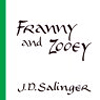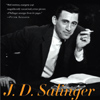Franny and Zooey at 50

Applauding Franny and Zooey
Fifty Years of Ongoing Inspiration
 It was Shakespeare who told us that “all the world's a stage, and all the men and women merely players,” but it was left to J.D. Salinger to show us exactly who is sitting in the audience.
It was Shakespeare who told us that “all the world's a stage, and all the men and women merely players,” but it was left to J.D. Salinger to show us exactly who is sitting in the audience.
Salinger disclosed that identity on September 14, 1961, with the publication of Franny and Zooey . The book, Salinger's third, was an immediate success, catapulting to the number one spot on the New York Times Best Sellers List and earning for its author the coveted cover of Time magazine. Although it never obtained the classic status of The Catcher in the Rye , Franny and Zooey remains enormously popular today and is revered by readers as the flagship of Salinger's Glass family series. A half century after the book first appeared, we continue to explore its intensely spiritual depths, often with the same avid anticipation as did readers in 1961, still attempting to squint past the stage lights in the hopes of glimpsing Salinger's revelatory audience beyond the glare.
When considering a blog post commemorating the fiftieth anniversary of Franny and Zooey, I had few qualms. After all, I had read the book repeatedly since I was a teenager and had written about it countless times; so I felt secure that I could deliver an acceptable contribution. But I soon began to fear that I was in need of a fresh approach. Worse still, I didn't feel fresh myself as it dawned on me that I was now roughly as old as the book. So, searching for inspiration, I found myself rereading Franny and Zooey yet again. In essence, challenging the book to show me something new one more time.
I was not disappointed. Franny and Zooey at fifty proved to be an unexpected reencounter that transported me back to those younger days when even the most sweeping and mystifying questions of life and existence somehow seemed approachable, even solvable. It was, in short, a return to innocence. After fifty years, Franny and Zooey had managed to rejoin me to that pure perspective; and from that place, succeeded in bearing yet another gift: I now understood the book's contents in terms of a metaphor that spoke to me with a clarity that no previous reading had allowed.
Franny and Zooey Glass are the youngest of seven children and the only members of the clan to follow their parents' footsteps into professional acting. Salinger depicts them as being consumed with their individual performances: with where they will deliver their lines on stage and how they will be received. But they've misjudged the most vital element of any presentation: the composition of the audience. The blazing stage lights, pointed directly onto Franny and Zooey as individuals have blinded them to the audience beyond.
So, both have constructed imaginary images of who is sitting in the audience. In fact, much of Franny and Zooey involves a debate on the nature of their imagined onlookers and their lack of connection. Neither sibling questions their own abilities or talents, but both doubt the worthiness of the audience. To Franny and Zooey, the invisible spectators don't seem to applaud correctly; they laugh at the wrong lines and may not realize the caliber of the presentation at all. So, Franny and Zooey have begun to think of them as being boorish, imperceptive and unenlightened. They do acknowledge and agonize over the consequences of such aloofness. Still, their own presentations have slipped into half-hearted reluctance.
But at the conclusion of Franny and Zooey , the stage lights are dimmed and the audience is finally revealed. With clear vision for the first time, Franny and Zooey are stunned to discover that the theater is not populated by the pedantic, oafish or imperceptive spectators they had always imagined. One onlooker alone has been sitting in the audience all the while, evaluating the performance of their lives. And it is Christ Himself.
The mystical allure of Franny and Zooey continues to draw readers fifty years after its publication. Since 1961, each generation has rediscovered the book and embraced the unfading beauty of its probing spirituality while delighting in Salinger's undeniable gift for impeccable dialogue. Yet, for those of us who value the works of J.D. Salinger and grieve the slimness of his output, Franny and Zooey contains a bittersweet dawning. Within the book's larger message, we can sense the inevitability that Salinger would soon dim and eventually extinguish his own stage lights, striving to perceive his audience more clearly before exiting the stage.
Kenneth Slawenski
September 14, 2011
Tweet
